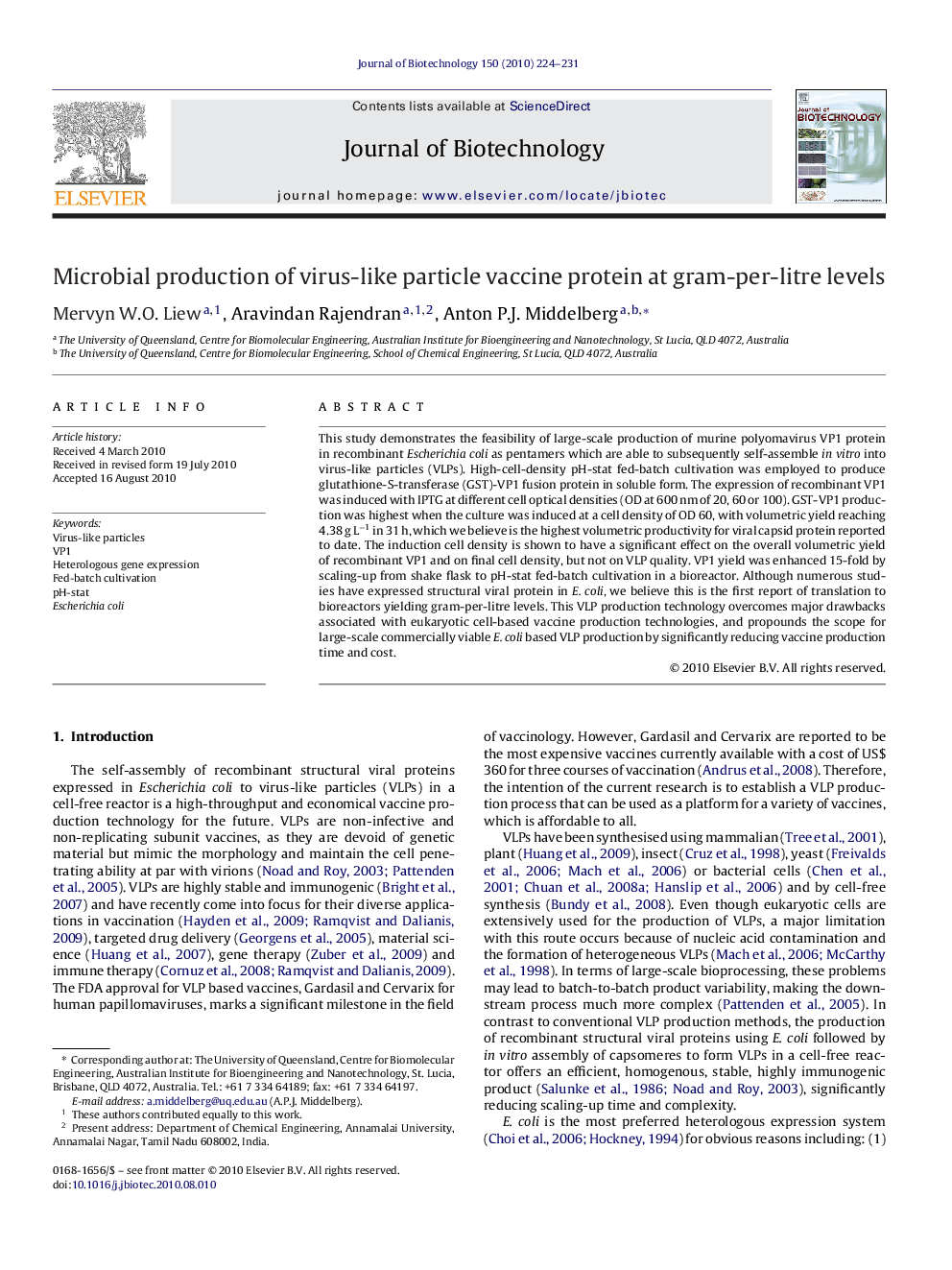| Article ID | Journal | Published Year | Pages | File Type |
|---|---|---|---|---|
| 24006 | Journal of Biotechnology | 2010 | 8 Pages |
This study demonstrates the feasibility of large-scale production of murine polyomavirus VP1 protein in recombinant Escherichia coli as pentamers which are able to subsequently self-assemble in vitro into virus-like particles (VLPs). High-cell-density pH-stat fed-batch cultivation was employed to produce glutathione-S-transferase (GST)-VP1 fusion protein in soluble form. The expression of recombinant VP1 was induced with IPTG at different cell optical densities (OD at 600 nm of 20, 60 or 100). GST-VP1 production was highest when the culture was induced at a cell density of OD 60, with volumetric yield reaching 4.38 g L−1 in 31 h, which we believe is the highest volumetric productivity for viral capsid protein reported to date. The induction cell density is shown to have a significant effect on the overall volumetric yield of recombinant VP1 and on final cell density, but not on VLP quality. VP1 yield was enhanced 15-fold by scaling-up from shake flask to pH-stat fed-batch cultivation in a bioreactor. Although numerous studies have expressed structural viral protein in E. coli, we believe this is the first report of translation to bioreactors yielding gram-per-litre levels. This VLP production technology overcomes major drawbacks associated with eukaryotic cell-based vaccine production technologies, and propounds the scope for large-scale commercially viable E. coli based VLP production by significantly reducing vaccine production time and cost.
